Dame Fortune
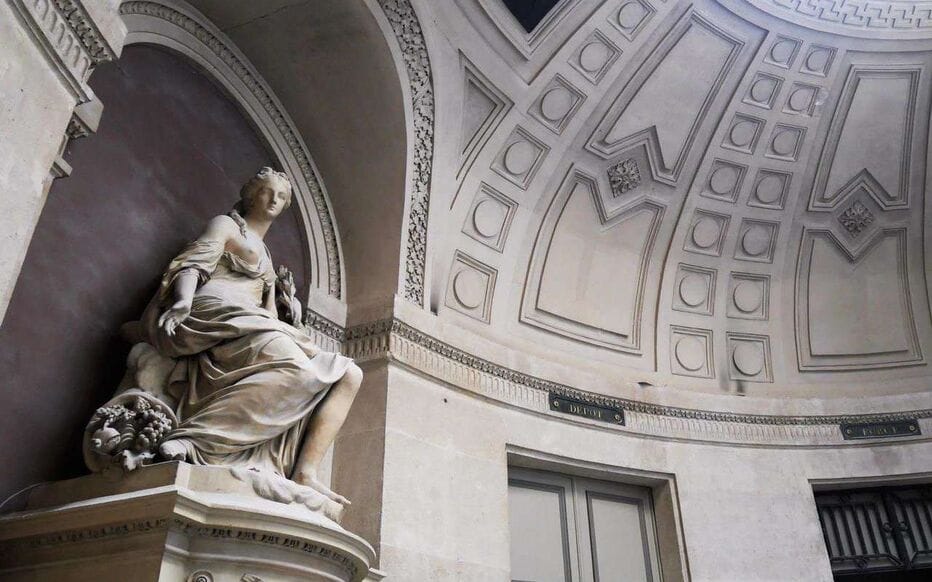
Niccolò Machiavelli met Leonardo da Vinci periodically between 1503 and 1506. This was when Cesare Borgia employed Leonardo as a military architect and engineer and Machiavelli was the envoy for the Florentine republic. For Leonardo (as for Shakespeare a century later), encounters like this were governed by Dame Fortune and we are all fortune's fool.
Machiavelli would have had none of that. In The Prince (written 1513-, but not published till 1532, after his death) he writes ironically: "it is better to be rash than timid, for Fortune is a woman, and the man who wants to hold her down must beat and bully her. We see that she yields more often to men of this stripe than to those who come coldly toward her." He could have been writing about Cesare Borgia, or Cesare's father, Pope Alexander VI. In this view, Fortune favors the bold.
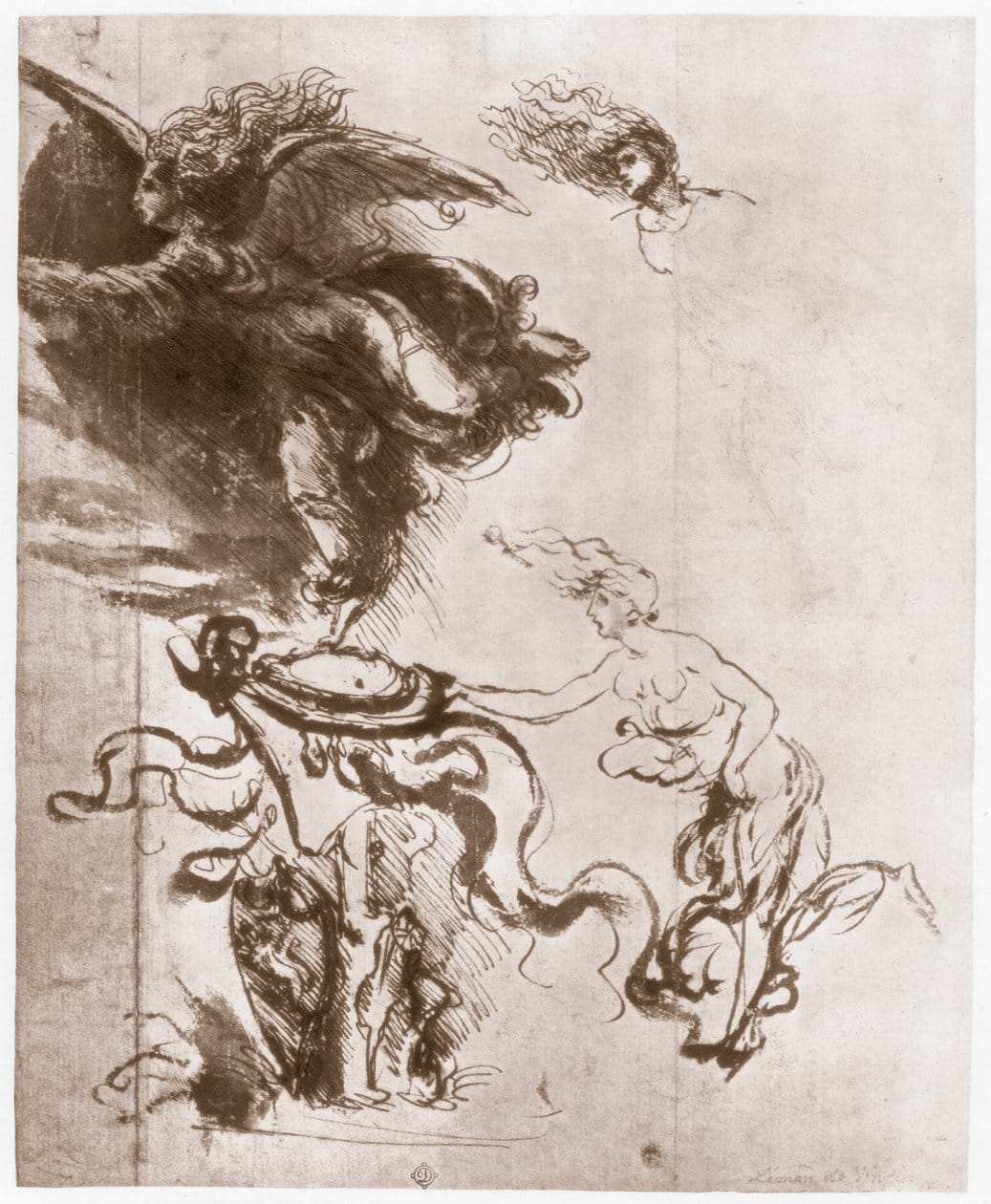
But what did she look like? Leonardo has a drawing of her from around 1483 - shown above - although I'm not sure what the goal is. Below, Albrecht Dürer gave it a try around 1502 with this copper engraving: she stands on an orb of the Earth, but he added angel wings and no Wheel of Fortune. Compare this with the Virgin Mary on Rubens' moon here.
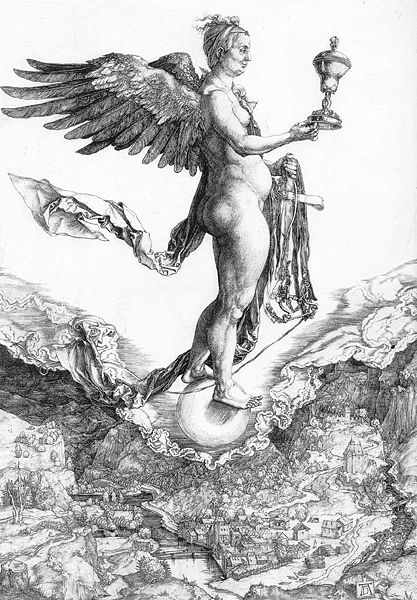
Originally a minor Greek and Roman fertility goddess, Dame Fortune pops up in Dante's Commedia (Inferno canto VII) - circa 1321 - where she seems to be a mercantile deity, Fortuna Marina. Virgil explains that she spins her Wheel of Fortune in the affairs of men, and wealth and prosperity come and go but, as he points out in the fourth circle of Hell, there are those among us who have been destroyed by their greed and avarice, Popes and Cardinals among them.
Below is an illustration of Dame Fortune for Boccaccio's influential De Casibus Virorum Illustrium (transl. as "On the Fates of Famous Men" or informally as "The Fall of Princes"). This work was written in the late 1350's and it influenced Chaucer (The Monk's Tale) and anticipates Machiavelli's The Prince, except it is medieval and gruesome, where The Prince is neither. This illustration is from a 1467 French version of De Casibus Virorum Illustrium, by the Coëtivy Master - see the Getty Museum for more of his illustrations.
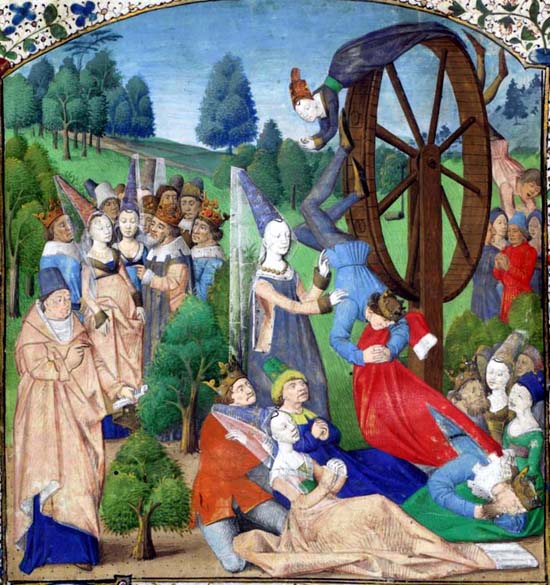
Below is another image of Dame Fortune, this time with her golden orb of the world, circa 1490.
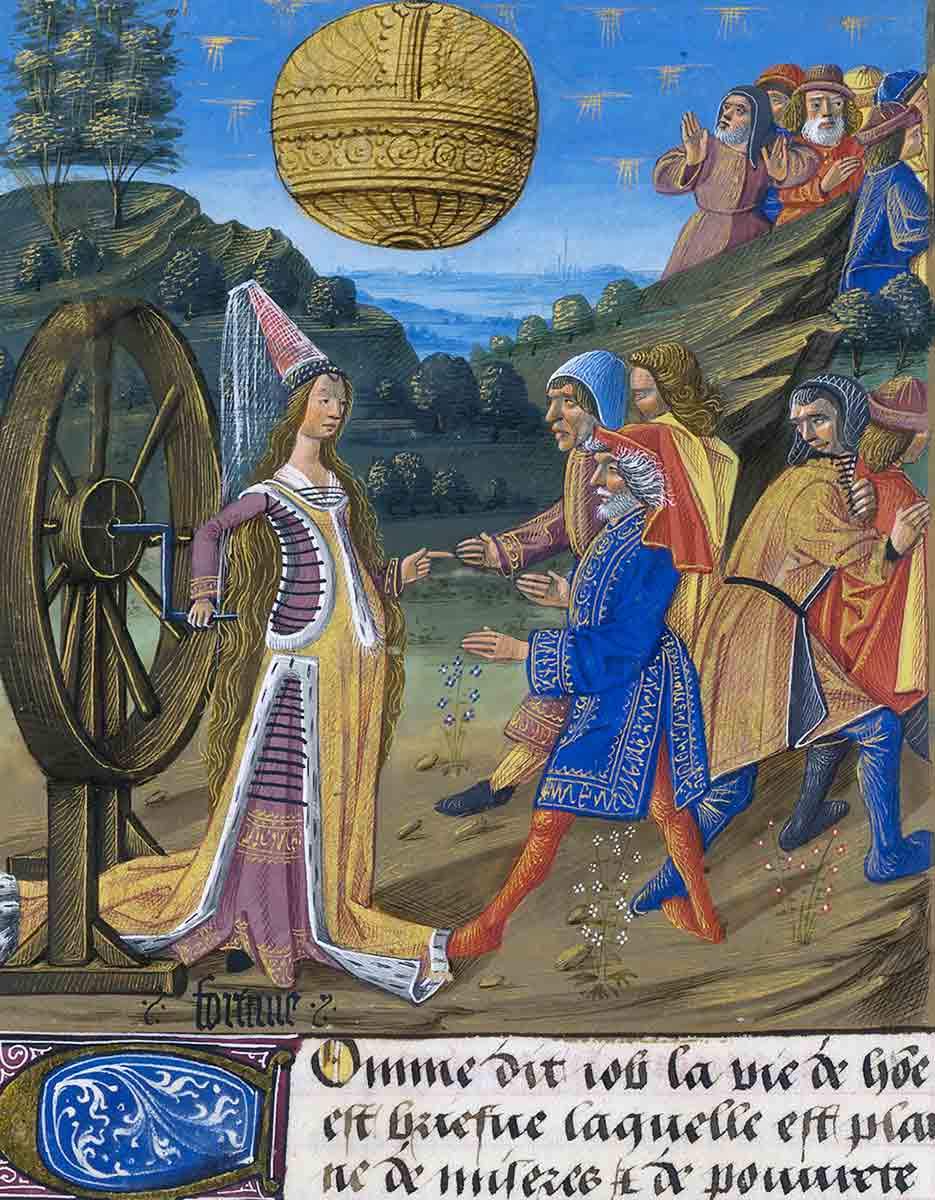
German painter Sebald Beham's interpretation is from 1541. It's a bit odd: he has given her wings and a palm branch in this engraving.
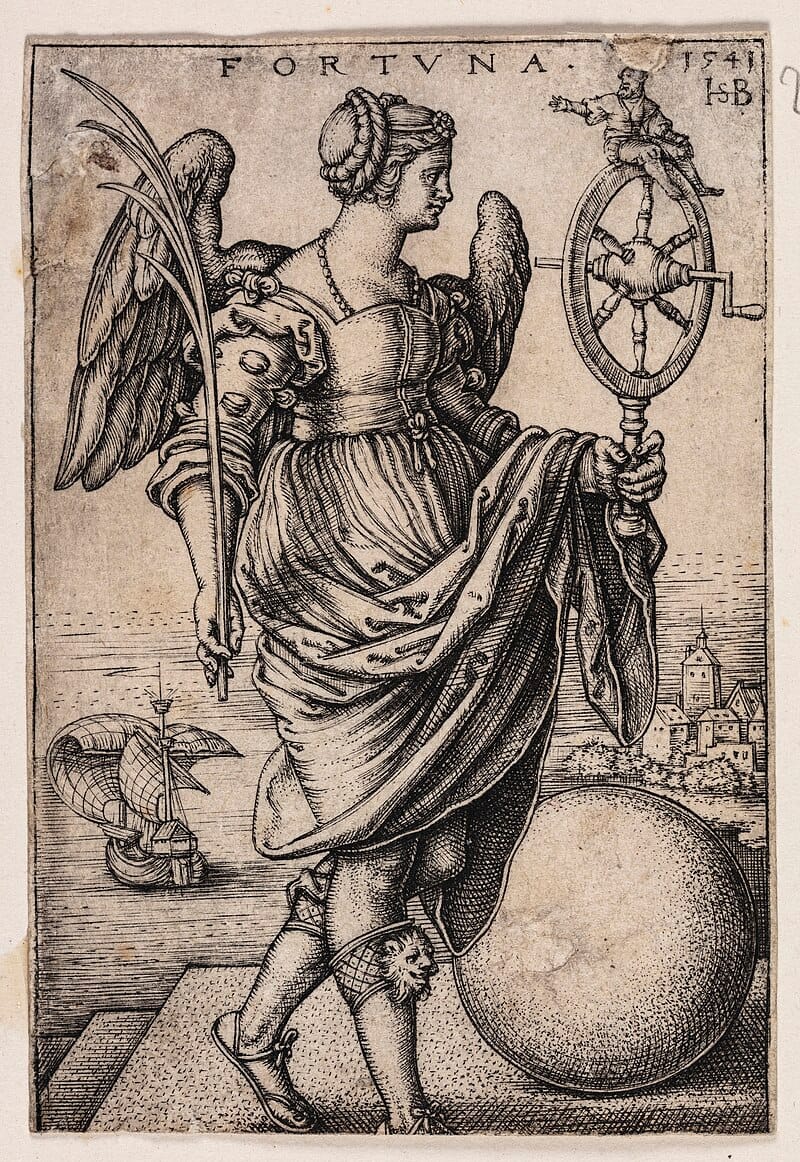
By this time, Dame Fortune had become associated with the Age of Discovery, for example the painting below, Allegory of Fortune (Fortune Marina), by Frans Francken the Younger, circa 1615-1620 - the ocean, the sail, the globe beneath her feet.
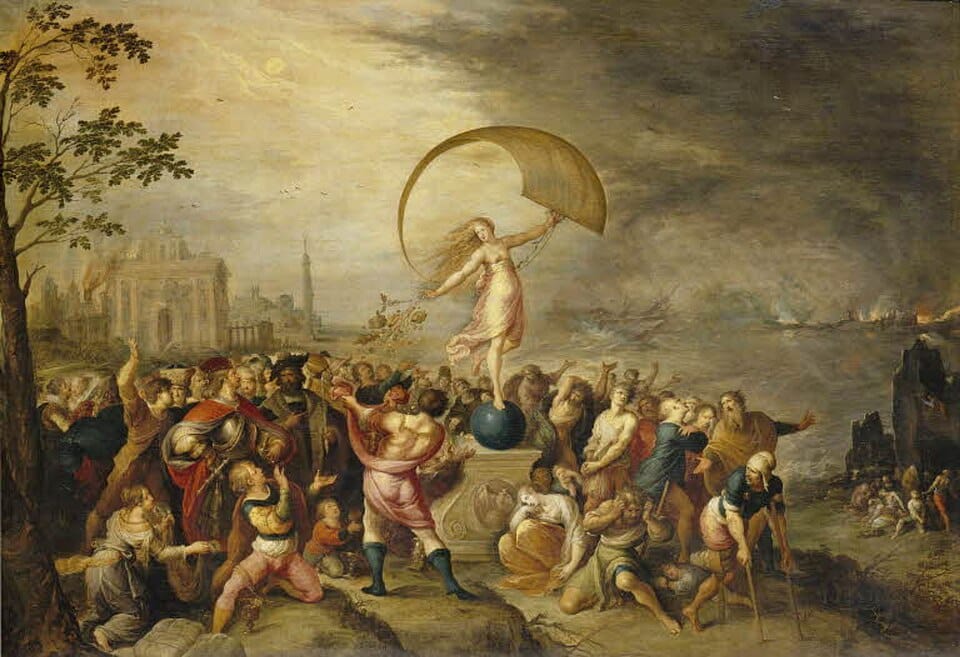
Also see Tarot and Saint Catherine of Alexandria.
